How to DIY affordable backgrounds for food photography and cooking videos!
This post contains affiliate links.
In food photography/videography, the most important factors, besides the food of course, is what makes the food look good- the food styling, perfectly-paired props, utensils, cookware, and most importantly, the background. The background or backdrop will set the whole mood for a photoshoot or cooking video. It can literally help to “make or break” the food content!
I will go ahead and say that taking food photos and recording cooking videos are totally different processes and require different techniques. Food photos can easily be edited in photoshop. With cooking videos, it is a lot more complex and very time-consuming so the background needs to be more reliable. The backgrounds I want to cover are made specifically for creating videos and video content, but also work great for photos.
A recipe videographer needs a background surface that looks good, but that is also really sturdy and can handle working with food. Working with food can get quite messy, duh, so the background surface needs to be stain-resistant and it needs to be durable enough to handle heavy equipment, sharp edges, and sometimes high temperatures. So the background needs to be able to withstand all that, while also needing to be lightweight enough for easy mobility and storage.
I know, I know! That seems like a lot to take into consideration. And on top of all that, you may not have a ton of money to work with either. Luckily for you, I have been using affordable DIY backgrounds and backdrops to my advantage since the start of my photography career, and have built up a lot of information to share through my 10 years of experience. Experimenting with different DIY backgrounds and backdrops has actually played a huge part in my videography career!
Over the course of building up my food photography business, I have run into issues with everything from background costs to storage, mobility, durability, stains, and so on. So, I ended up doing a lot of research and experimenting to finally figure out the best, and most affordable, solution for my food content and my studio space. What I found out after all that experimentation was that it really all comes down to figuring out what would meet my specific needs exactly.
I tried everything from painted wood boards, to rolls of background paper and vinyl, to my final favorite background solution- a vinyl-decorated MDF board! However, since every food photographer’s needs are different, such as available studio space, storage space, equipment, physical limitations, and financial factors, any one of these background solutions may be more suitable for you compared to the others.
To find out what DIY background or backdrop will work best for you, I recommend simply comparing the pros and cons of each background solution with how it will or won’t work in your studio. Here are the DIY Backgrounds and Backdrops that I have used over my 10 years of food photography!
Color Paper Backdrops
Background Paper, pink, 53" x 36'
Background Paper, Super White, 53" x 36'
Background Paper, Black, 53" x 36'
Background Paper, Blue Mist, 53" x 36'
Background Paper, Thunder Gray, 107" x 36'
Background Paper, Super White, 107" x 36'
Backgrounds I Started With
Right away, I started with humble beginnings by making my own backgrounds. I bought scrap wood from my local hardware store, fitted the pieces together, and painted or finished them to fit whatever theme I needed. I would take a single board and paint each side a different way to really maximize effectiveness.
For example, on one board I painted one side red, white, and blue for 4th of July barbeque shoots and used a finish on the other side to create a more rustic look. This method made it really easy to make whatever backdrop or background theme that I needed! However, this quickly became a much bigger project than I could have imagined.
As my scope for photography (and backdrops) grew larger, I racked up tons of these heavy scrap wood boards laying around, taking up space all over my studio and they became hard to organize. In times where I needed to use 3 backgrounds or backdrops for a shoot, it became too much to effectively handle.
I eventually moved on to another background solution but this wood board solution was a great place to start and still might work out better for other food photographers/videographers. Especially if you’re starting out with humble beginnings as I did.
Wood Background Pros and Cons:
Pros:
- Extremely durable.
- Has no problems holding up to heavy kitchen equipment, movement, high heat, or sharp objects.
- Great longevity.
- Easily customizable on both sides with paint or wood stain.
- High-quality on camera for photos and videos.
- Very cost effective for the board’s longevity.
Cons:
- Stains easily.
- Soaks up spills which can lead to damage and stains.
- Tough to store.
- Heavy to move or swap out during shoots.
- Takes up a lot of room.
DIY Backdrop Materials:
- Wood boards
- Plastic paint tray
- Paint brushes
- Paint
- Wood finish
- Protective gloves
Storage Equipment for Wood Boards:
Backdrops I Experimented With
I eventually moved on to vinyl backdrops. You know, the ones they use for family photoshoots. These quickly became my go-to for backdrops and backgrounds since they were so thin, light, and stylish. The vinyl backdrops came in several different colors and material facades, much like those wood backdrops I had made, but much lighter and easier to use. These really saved my back!
As my photography operations continued to grow, I was able to utilize much more space and I decided to try something different. I created a system in which I could easily use and interchange large rolls of paper as my backdrops. I used mounting hooks attached to the walls to hold up a long piece of PVC pipe which held a roll of background paper around it.
I could then unravel the colored background paper behind my shooting area for a very effective food content background. I used the same system to store these rolls on the wall by using heavy-duty metal pipes mounted on wall hooks where I could easily switch out the colored background papers to compliment the shoot.
This is a great option for food photographers that are working with tight workspaces or need affordable ways to create more versatile backgrounds for shoots. It should be kept in mind that while these do work well for photos, they don’t hold up well for the roughness of cooking videos as they can stain or tear easily.
Printed Vinyl and Paper Background Pros and Cons:
Pros:
- Very stylish
- Interchangeable colors/designs.
- High-quality on camera for still photos.
- Easily rolled up for storage.
- Lightweight so perfect for mobility.
- Plenty of size options.
Cons:
- Not very durable
- Does not do well with heavy cooking equipment, a lot of movement, sharp objects, or high heat.
- Stains easily.
- Can easily be damaged.
- Does not last for long, usually only months even when used and stored gently.
- Not cost efficient enough for the lack of longevity.
Vinyl Backdrop Materials:
- Printed Vinyl Background
Backdrop Paper Materials:
- Background Paper, pink, 53” x 36’
- Background Paper, super white, 53” x 36’
- Background Paper, black, 53” x 36’
- Background Paper, blue mist, 53” x 36’
- Background Paper, thunder gray, 107” x 36’
- Background Paper, super white, 107” x 36’
DIY Backdrop Storage System Equipment:
- Adjustable sawhorse twin pack
- Garage storage hooks
- 1 ½ inch, 10 ft Electric metallic tube
- Metal spring clamps
- Nylon spring clamps
- Metal wall brackets
- Irwin Quick-Grip
- Base table
What I Use Now
Now it’s time for my personal favorite DIY background solution: an MDF board with decorative contact paper! This contact paper is a type of adhesive vinyl that is much more durable and workable than plain vinyl backdrops. This is what people use in the bottom of kitchen drawers or on countertops to portray that fancy marble look without having to pay full price, while still being tough enough to withstand constant use.
Since this adhesive vinyl is made specifically for kitchen use, it is literally the perfect background surface for cooking videos! For me, these decorated MDF boards have been the best of both worlds when it comes to combining style, durability, and on-camera quality!
These MDF boards are more lightweight and thinner than the wood boards so they’re easier to handle, but they're also just as durable when it comes to handling heavy equipment if they’re used properly. And the vinyl contact paper not only comes in stylish designs, but is super easy to clean, doesn’t scratch or stain easily, and looks great in photos and videos alike!
While these vinyl-decorated boards have been the overall best solution for me, there are a couple of downsides. They don’t last quite as long as the painted wood boards and, of course, they take up more space than the rolled backdrops. Still, all things considered, the pros of these boards far outweigh the cons in my case.
Background Tip: This type of background needs to be placed on top of a heavy table during use, otherwise it will start to bend. My set-up is sawhorses holding up my heavy Ikea table top, then my decorated MDF board on top.
MDF Board with Vinyl Contact Paper Pros and Cons:
Pros:
- Lightweight yet sturdy.
- Very durable.
- Handles heavy kitchen equipment, sharp objects, and high heat very well.
- Stain-resistant thanks to the easily cleanable surface of contact paper.
- Easy to lift and store.
- Both sides are easily customizable.
- Very cost efficient!
- Looks great for photos and videos both.
Cons:
- Takes up more space than a roll of vinyl fabric or backdrop paper.
- Doesn’t last quite as long as the wood board alone. In my experience, these last for about 2 years with heavy use.
DIY Vinyl Board Materials:
Storage Equipment for Vinyl-Decorated Backgrounds:
More Food Photography and Cooking Videography Help
The best backdrops and backgrounds for your food content will totally depend on what you're working with and what you’re trying to achieve. To dig a little deeper into the specs of these backgrounds and backdrops and what factors you need to keep in mind, you can check out my full breakdown of the Best Backgrounds for Cooking Videos. For even more food photography and cooking video help, check out some of my other helpful blogs:
- Equipment for Video Recipes
- Best Camera for Cooking Videos
- My Favorite Cooking Video Tools
- 7 Tips for Studio Equipment Safety
- 5 Ways to Improve Studio Organization
- Storing Backgrounds for Food Photography
Food Photography & Video Tips from My Studio
Here’s a peek at the tools, gear, and camera setups I use to film my recipe videos and photograph food at home. Over the years, I’ve tested dozens of different setups, and now I’m sharing what actually works for me—whether I’m filming overhead shots for YouTube or styling still photos for my blog. If you’re curious about how I create the content you see here, these posts are a great place to start.

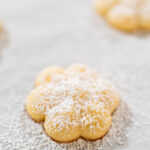

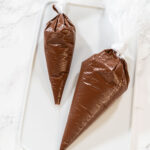


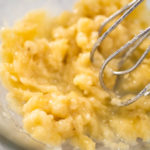

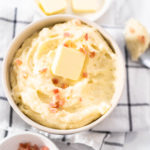
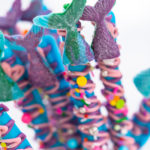
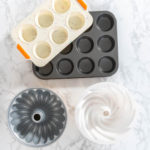
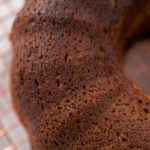













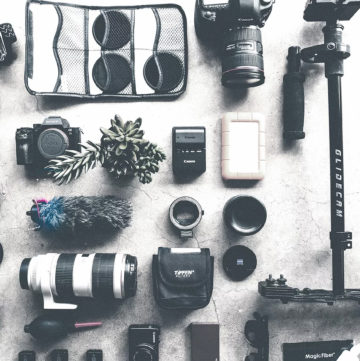
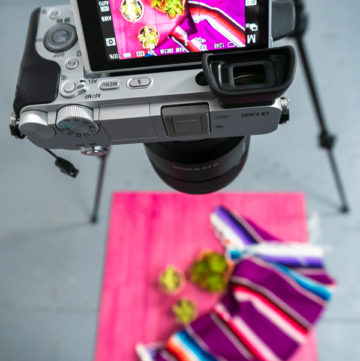



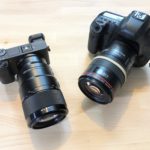
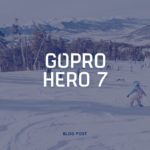
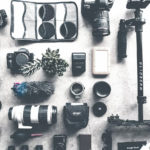
Leave a Reply